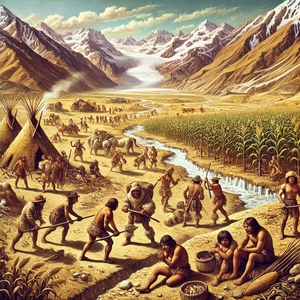Climate change intensified violence in the south-central Andean highlands from 1.5 to 0.5 ka
The study examines the relationship between climate change and interpersonal violence in the south-central Andean highlands from approximately 1.5 to 0.5 ka (AD 470–1540). Using bioarchaeological data from 2,753 crania across 58 archaeological sites, researchers compared evidence of skeletal trauma with records of ice accumulation from the Quelccaya Glacier, which serve as a proxy for precipitation levels. The analysis found a strong correlation between drought periods and increased violence in the highlands but no significant relationship in mid-elevation or coastal regions.
The findings suggest that highland populations were particularly vulnerable to climate change due to their reliance on rain-fed agriculture. During drought periods, resource scarcity likely led to increased competition, social instability, and violent conflicts. In contrast, midland and lowland populations, which had access to more diverse subsistence strategies such as irrigation-based agriculture and trade networks, were better able to withstand climate stress without resorting to violence.
The study also explores broader implications, including how climate change contributed to the decline of major Andean states such as the Wari and Tiwanaku civilizations. The collapse of these societies coincided with the onset of the Medieval Climate Anomaly (ca. AD 950–1300), a period of prolonged drought, which may have disrupted agricultural production and weakened sociopolitical structures. Following their collapse, the Late Intermediate Period (AD 1000–1400) saw increased evidence of conflict and societal fragmentation in the highlands.
Overall, the research highlights how environmental stress can exacerbate social tensions, leading to periods of intensified violence. The authors argue that while climate change does not directly cause violence, it creates conditions that make violent competition more likely, especially in regions where alternative adaptive strategies are limited.
